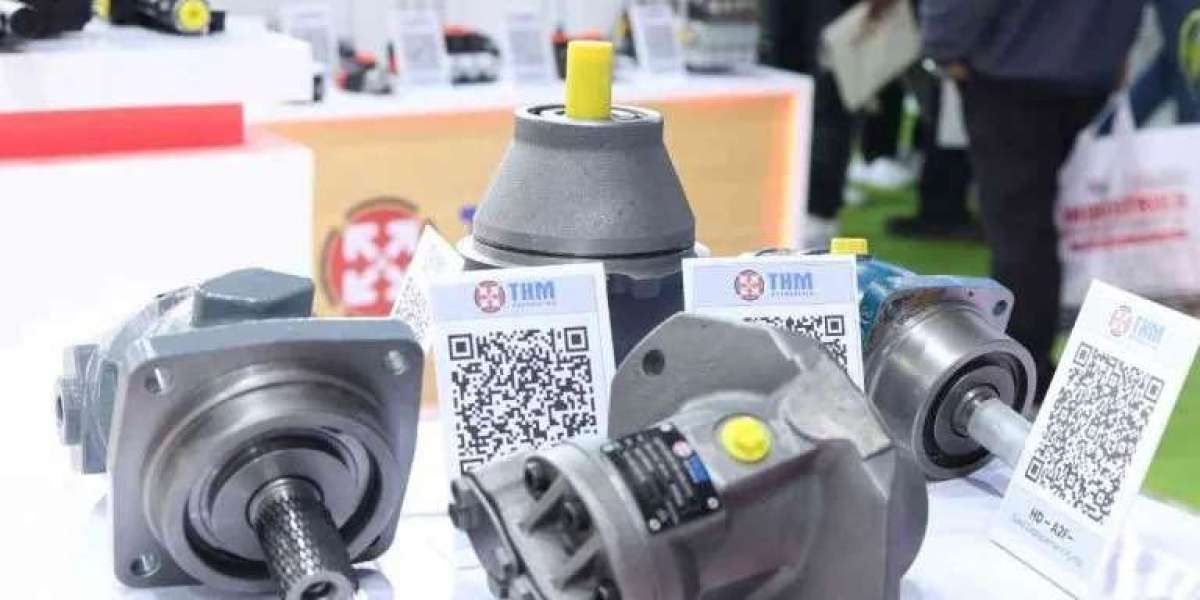Hydraulic systems have powered industries for decades, but as automation and energy efficiency become central, traditional setups are being replaced by smarter alternatives. One standout innovation is the servo motor hydraulic pump—a hybrid solution that combines the force of hydraulics with the control finesse of electric servo motors.
From industrial robotics to mobile equipment, these pumps are changing how engineers approach design, control, and energy consumption. Their ability to deliver variable pressure and flow on demand—without constant motor running—makes them an ideal fit for today’s fast-paced, energy-conscious world.
Chapter 1: What Exactly is a Servo Motor Hydraulic Pump?
A servo motor hydraulic pump integrates a high-performance electric servo motor with a hydraulic pump. Instead of running continuously like traditional hydraulic motors, the servo motor activates only when needed, adjusting speed and torque in real-time. This reduces energy waste and enables precise control.
Unlike fixed or variable displacement pumps that rely on mechanical valving, the servo setup uses digital signals and feedback loops to tailor its response. This means hydraulic power becomes programmable, opening the door to smarter and more adaptive systems.
Chapter 2: Key Components That Make the Difference
A typical servo motor hydraulic pump system comprises several interconnected parts, each with a distinct role:
Servo Motor: Offers closed-loop control over speed and torque.
Hydraulic Pumps for sale: Usually a gear pump, vane pump, or piston pump driven by the servo.
Drive Controller (Servo Drive): Receives commands from a PLC or computer and adjusts motor performance accordingly.
Feedback Sensors: Measure pressure, position, and flow for real-time adjustments.
This setup functions as the beating heart of intelligent hydraulics, capable of adapting to task demands instantly.
Chapter 3: The Power of Integration with Hydraulic Proportional Valve
A key feature of modern hydraulic systems is the hydraulic proportional valve, which modulates flow and pressure based on real-time needs. When combined with a servo motor hydraulic pump, these valves enable seamless adaptability.
Imagine a CNC press machine where the pressure needed varies per operation. Instead of pumping maximum pressure throughout, the proportional valve and servo motor pump collaborate to provide just enough—saving energy and minimizing wear.
Together, they form a dynamic duo, adjusting not only to system load but also to operational commands from control software.
Chapter 4: The Essential Role of Directional Check Valve
In every hydraulic system, controlling the direction of fluid flow is crucial. A directional check valve ensures that hydraulic fluid flows in only one direction—preventing backflow, pressure drops, or unintended movement.
With a servo motor hydraulic pump, these valves play an even more important role. Because the servo motor can stop and reverse quickly, the directional check valve ensures fluid control remains stable regardless of rapid changes. This is especially valuable in mobile systems, heavy machinery, or robotics where fast actuation is required.
Chapter 5: Inside the Hydraulic Cylinder: The Hydrolic Piston
At the receiving end of all this hydraulic power packs is the hydrolic piston—the moving component inside a hydraulic cylinder that performs the actual mechanical work.
When paired with a servo motor hydraulic pump, the hydrolic piston benefits from:
Variable Speed and Force: Ideal for tasks needing both speed and precision
Reduced Impact: Softer starts and stops preserve piston life
Feedback-Driven Movement: Sensors can control piston travel down to the millimeter
From industrial presses to aerospace controls, servo-driven systems make the piston a more intelligent actuator.
Chapter 6: Compact Power: Servo Pumps for Dump Trailer Systems
One of the most impactful applications of servo motor hydraulic pumps is in dump trailer systems. Traditional trailers use large, inefficient pumps that run constantly. Servo pumps offer:
On-Demand Power: Activate only when needed—drastically reducing energy use
Battery Compatibility: Work well with 12V/24V battery setups in mobile equipment
Quiet Operation: Ideal for urban or noise-sensitive zones
Paired with directional check valves and hydraulic proportional valves, these systems become lean, quiet, and smart.
Chapter 7: Linear Precision: Low Cost Linear Position Sensor Integration
Modern hydraulics isn’t just about brute strength—it’s about knowing exactly where things are. That’s where the low cost linear position sensor becomes indispensable.
When installed on or within a hydraulic cylinder, these sensors provide real-time feedback about piston position. This data loops back into the servo drive, ensuring that:
Movements are accurate down to fractions of a millimeter
Positions can be repeated endlessly with high consistency
Safety is increased by detecting misalignments or errors early
For automated production lines or robotic arms, this level of accuracy is non-negotiable—and servo motor pumps make full use of it.
Chapter 8: Servo Motor Drive: The Digital Brain of Hydraulic Control
No smart pump is complete without an intelligent controller. The servo motor drive, also called an industrial servo drive, interprets control commands and sends precise instructions to the motor.
It uses feedback from sensors to continuously adjust motor torque and speed, enabling dynamic responses to shifting loads. Features include:
PID Control: For stability and response tuning
Communication Protocols: CANopen, EtherCAT, Modbus for system-wide integration
Diagnostics and Alerts: Helps predict faults before they occur
The servo motor drive transforms a basic hydraulic pump into a responsive, networked machine.
Chapter 9: The Financial Side: Servo Motor Price vs. Long-Term Value
Some engineers hesitate to choose servo systems because of the perceived servo motor price. But when evaluated over time, servo pumps often save more through:
Lower energy bills
Less wear on components
Reduced maintenance frequency
Higher uptime and throughput
The price of a servo motor depends on several factors:
Torque Rating
Feedback Sensor Type (e.g., encoder, resolver)
Cooling Type (air or liquid)
Drive Compatibility
Instead of focusing only on upfront cost, consider total cost of ownership. In most cases, servo pumps pay for themselves quickly.
Chapter 10: Real-World Reliability: Hydraulic Cylinder Repair Scenarios
Despite their efficiency, even the most advanced systems may require occasional hydraulic cylinder repair. With servo integration, repairs often come later—and smarter.
Because servo systems constantly monitor pressure, flow, and position, they can alert operators to early signs of:
Seal Wear
Rod Misalignment
Internal Leakage
Scheduled maintenance becomes predictive, not reactive—cutting downtime dramatically. And when repairs are needed, diagnostics from the servo drive make troubleshooting faster and more precise.
Chapter 11: Clean, Compact Power: Electric Hydraulic Pump Advantages
The shift toward electric hydraulic pumps aligns perfectly with servo motor technology. Unlike diesel or belt-driven systems, electric pumps:
Operate quietly
Don’t need fuel
Produce fewer emissions
Are compact and modular
This makes them ideal for OEMs designing mobile or compact machinery. When powered by servo motors and controlled by smart drives, electric hydraulic pumps offer the ultimate in controllable, eco-friendly power.
Conclusion: Servo Motor Hydraulic Pumps Are the Future of Fluid Power
From smart factories to construction sites, servo motor hydraulic pumps are redefining what’s possible in hydraulic engineering. Their blend of precision, efficiency, and adaptability means they’re no longer just for elite machines—they’re becoming the new standard.
Combined with advanced components like hydraulic proportional valves, servo motor drives, directional check valves, linear position sensors, and electric hydraulic pumps, these systems empower industries to work faster, safer, and more sustainably.
FAQs
Q1. What are the main benefits of servo motor hydraulic pumps?
A1. They offer energy efficiency, precise control, reduced noise, and lower maintenance compared to traditional pumps.
Q2. Can I retrofit a servo pump into my existing hydraulic system?
A2. Yes, as long as the pump's flow and pressure ratings match your system's needs and compatible control interfaces are available.
Q3. How do linear position sensors work in these systems?
A3. They provide real-time position feedback to the servo drive, enabling precise motion control and predictive maintenance.
Q4. What applications benefit most from electric hydraulic pumps?
A4. Mobile machinery, medical devices, packaging systems, and smart manufacturing equipment all benefit from clean, efficient electric pumps.
Q5. Are servo motors worth the higher initial cost?
A5. In most cases, yes—especially when long-term savings from energy efficiency, reduced wear, and predictive maintenance are considered.














